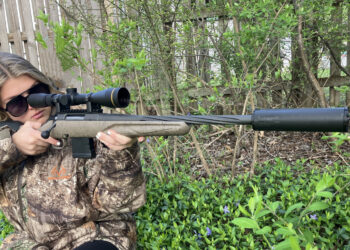By Frank Iannamico
The operation of the open bolt submachine gun is about as simple as it gets for a firearm design. It fits well into the theory of fewer parts mean fewer problems.
Despite the fact that the vast majority of the world’s successful submachine guns have used the basic open bolt, fixed firing pin system there are engineers and designers that have persisted on “improving” the design. Some of the changes have been as minor as the implementation of a separate firing pin actuated by a pivoting hammer, like the Thompson and the Russian PPD submachine guns. The original 1921-1928 Thompson also used the controversial Blish lock principle to retard the action; however the Blish lock was eliminated from the later M1 and the separate firing pin from the M1A1 Thompson designs. Such concepts usually only added more labor, machining cost and weight to a weapon and usually did little to enhance performance.
Perhaps one of the most complicated submachine guns ever designed was the Hungarian M39 machine carbine and its folding stock counterpart the M43. The M39 weapon was designed in 1937 by engineer Pal D. Király and manufactured by the Danuvia Gepgyar factory in Budapest. The M39, also known as the Roham Puska, was adopted by the Honvedseg, the Hungarian Army in 1939, hence the weapon’s Model 39 designation. The weapon was also issued in limited numbers to the Rendorseg, the Hungarian police during 1940. Having an overall length of 41.25 inches (1,048 mm) and a loaded weight of 10 pounds (4.6 Kg), the M39 fits the description of a military battle rifle more than a submachine gun.
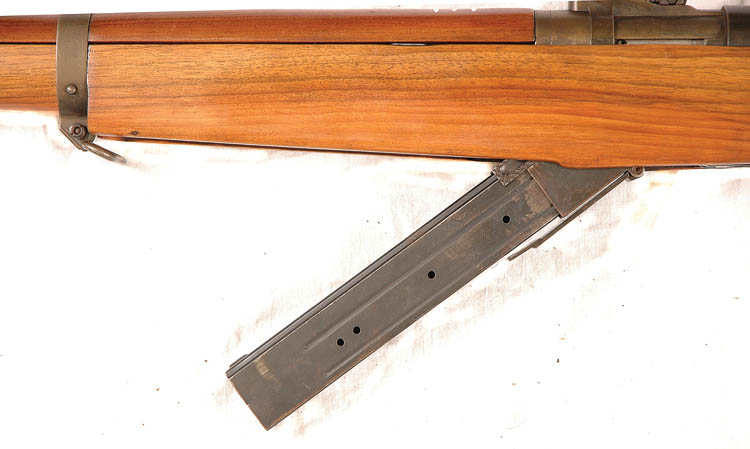
The M39 is a select fire weapon. The mode of fire is selected by rotating a ring located forward of the endcap at the back of a thick, tubular receiver. There are three positions: position E or Egyenkent (one by one) for semiautomatic fire; position S or Sorozat (in a row) for full-automatic fire and position Z or Zarva (closed) for safe. The rear sight is a tangent style open V notch, graduated in increments from 50 to 600 meters. The front sight is a post type mounted on the end of the barrel. The barrel is 19.68 inches (500 mm) in length. The standard M39 model has a fixed wooden stock. A variant designated as the M39/AM model, had a similar wooden stock that was hinged aft of the wrist area so it could be folded to the left side, making a more compact weapon. The folding stock idea apparently proved unsatisfactory as only a small number were produced.

Despite being somewhat complex, the breech bolt of the weapon is a very interesting retarded blowback design. The bolt consists of two separate pieces: a front half and slightly heavier rear half. A lever between the halves of the bolt assembly pivots on a steel pin acting against the rear portion of the bolt, and the opposite end of the lever extends downward from the bolt and is actuated by a channel machined in the receiver. The rear of the firing pin is rectangular with a machined curve to fit on a roller in the rear part of the bolt. The cocking handle, located on the right side of the receiver, fits into a slot machined in the bolt.
The weapon is operated by retracting the bolt handle rearward where the bolt assembly is held in this position by the sear. When the trigger is pulled the sear is lowered and the bolt is released. When thrust forward by the driving spring, the front part of the bolt strips a round from the magazine and chambers it while at the same instant inertia collapses the rear part of the bolt against the front of the bolt, extending the firing pin, firing the chambered round. Pressure from the fired cartridge acts on the bolt face and pushes it rearward. After moving approximately 3/4 of an inch to the rear, the trip lever in the bolt is pivoted flush with the bottom of the bolt, retracting the firing pin and transmitting a rearward force onto the back section of the bolt at a mechanical disadvantage, slowing its rearward travel. After the bolt is returned to its rearmost position, the cycle is repeated. If the weapon is in a semiautomatic mode of fire the sear will hold the bolt to the rear until the trigger is released and pulled again. If the weapon is in a full-automatic mode the bolt will continue to cycle until the trigger is released or the magazine is emptied. The full-automatic cyclic rate of the M39 is 730 to 750 rounds per minute. In spite of its complex and labor intensive construction, the bolt is lighter in weight than most open bolt submachine guns and the design allegedly reduces muzzle climb and vibration in the full-automatic mode of fire.
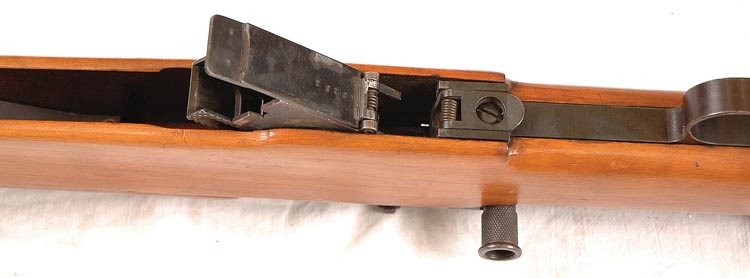
Another interesting feature of the M39 is its magazine, which was designed to be folded upward and locked into a cavity under the foregrip. After pivoting up into the foregrip, a spring-loaded dust cover is provided to protect the magazine from the elements. A catch lever is used to unlock the magazine from its stowed position in the foregrip and after being released the magazine can be pulled downward and locked into its firing position. To load the magazine it must be removed from the weapon. The steel magazine is a double stack, double feed design with a 40-round capacity. The magazine has a floorplate designed to facilitate easy disassembly. The back of the floor plate has a tab that slides into a slot in the magazine’s body. To remove the floor plate, pressure is exerted on the front of the plate causing the tab on the rear of the floorplate to disengage from its retaining slot allowing the floor plate to be released and the spring and follower to be removed. A loaded magazine has a weight of 1.8 pounds (.800 Kg). The M39 machine carbine has provisions for the mounting of a double-edged, sword-type bayonet that increases the overall length of the weapon to 54.25 inches (1,378 mm),
The M39 was chambered for the relatively powerful 9mm Mauser cartridge. The 9x25mm Mauser cartridge has a full metal jacketed projectile weighing 125 grains with an average muzzle velocity of 1,493 feet per second (455 meters per second). The 9mm Mauser round produces 618 foot pounds of energy as compared to the 9x19mm Parabellum’s 367 foot pounds. Despite the 9mm Mauser round’s ballistics, the M39 was overly large and heavy for a pistol caliber submachine gun. Reportedly less than 8,000 M39 models were produced.
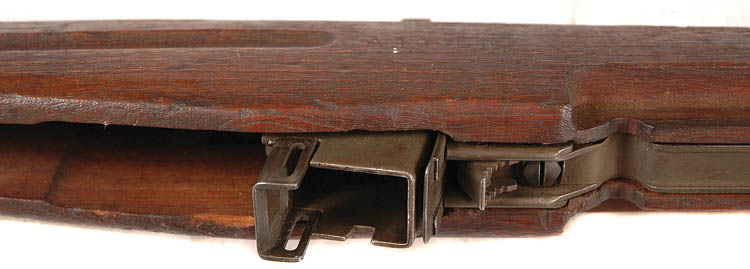
The Hungarian M43 Machine Carbine
The M39 was too long for convenient carry by paratroopers and in armored vehicles. A more compact version of the M39 machine carbine was needed. The same designer, Pal D. Király, developed the Hungarian M43 machine carbine, four years after the adoption of his M39 model. The primary feature that distinguished the M43 was its metal underfolding buttstock, with pivoting buttplate and wooden pistol grip. Oddly, the steel struts of the metal stock have (decorative?) wood inserts. The length of the barrel was reduced to a length of 16.7 inches (424 mm) – still long for a pistol caliber submachine gun. The overall length of the weapon with the stock extended is 37.5 inches (953 mm) and when folded the length is reduced to 29.5 inches (749 mm); a serrated metal catch secures the stock when folded. The weight of the M43 was also slightly lighter than the M39 with a loaded weight of 9.8 pounds (4.45 Kg). Other features like the complex retarded blowback bolt and folding magazine are the same as in the M39 model, except the ejector was relocated from the bolt and attached to the receiver. One distinct difference between the two weapons is the magazine’s configuration. The basic design is the same except the feed lips of the M43 magazine are angled slightly and as a result, when the magazine is inserted into the weapon, it is angled slightly forward. Other than the orientation of the feed lips the M39 and M43 magazines look very much alike. A fatal flaw in this design is that the M43 magazine will fit in and lock in an M39 and vice versa, but the magazine will not feed due to the different angle of their feed lips. During 1944, the bolt of the M43 was redesigned into a one-piece affair for ease of manufacture. M43 weapons with the new bolt configuration were called Sulyzaras or (weight lock). The M43 was produced at the Danuvia plant in Budapest. Reportedly there were 60,000 M43 models manufactured from mid 1943 until 1945.

The quality of the machining and detail of the Hungarian M39 machine carbine is impressive, nearly equal to the finest commercial sporting arms. The M43 while still quite good it was not up to the standards of the earlier M39. However, as a military weapon, both models were overly complicated and expensive to manufacture, particularly during a wartime situation.
The Hungarian M44
The M44 submachine gun was Pal Király’s last Hungarian design and was intended to be an improved version of the M43 machine carbine. The M44 was chambered for the more prolific 9mm Parabellum cartridge. With a 10 inch (250 mm) barrel and overall length of 20 inches (500 mm), the M44 was far more compact than the earlier M39 or M43 machine carbines. The M44 used a similar double stack, double feed 40-round magazine. The weapon used the basic open bolt system and the cyclic rate was 650 to 750 rounds per minute. The weapon was not adopted due to the Soviet invasion of Hungary and during the Russian occupation the PPSh-41 became the dominant submachine gun. The PPSh was manufactured by FEG in Hungary as the 7.62mm Géppisztoly 48.Minta.
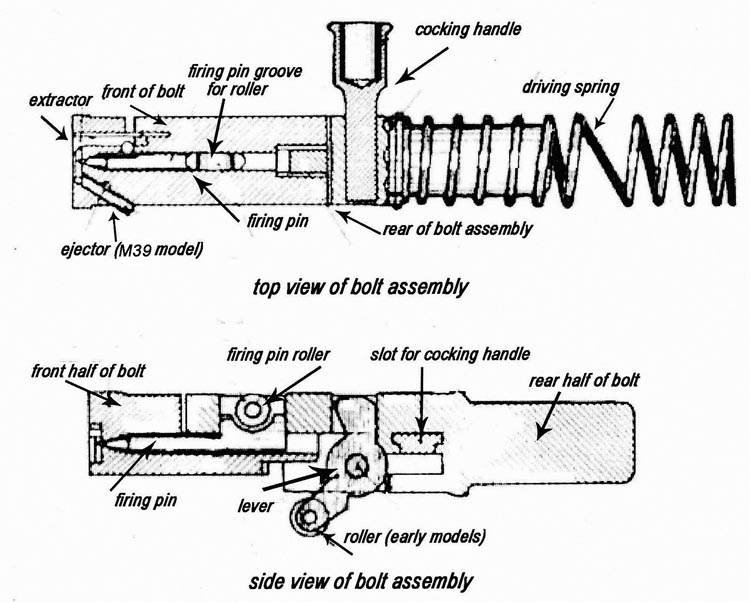
Pal Dedai Király (1880-1965)
Pal D. Király was born in Hungary where he earned an engineering degree at the Technical University of Budapest in 1902. He served in the Hungarian military from 1914 to 1918 ascending to the rank of Captain. After World War I, Hungary was prohibited from all weapons development. Seeking work in the weapon’s industry, Király relocated to Switzerland where he was employed by SIG Neuhausen. One of his better known designs was the SIG MKMO machine carbine and was sold to a number of countries in various calibers. After 1928, when weapon development was allowed to resume in Hungary, Király moved back to his native land and went to work for the Danuvia Gepgyar factory until the Soviet occupation after World War II. During 1947 he moved to the Dominican Republic, where he was employed by the Armeria of San Cristobal, run by Hungarian Sandor Kovacs. Király developed several weapons there; the best known was his Cristobal Carbine, which was popular in Latin America.
(The M39 and M43 submachine guns photographed for this article provided through the courtesy of the United States Marine Corps National Museum, Quantico, Virginia.)

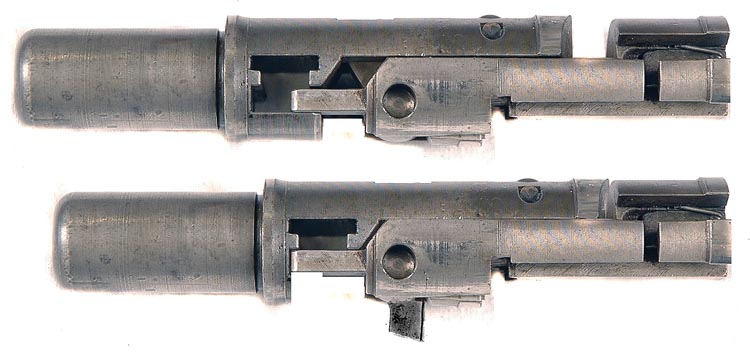
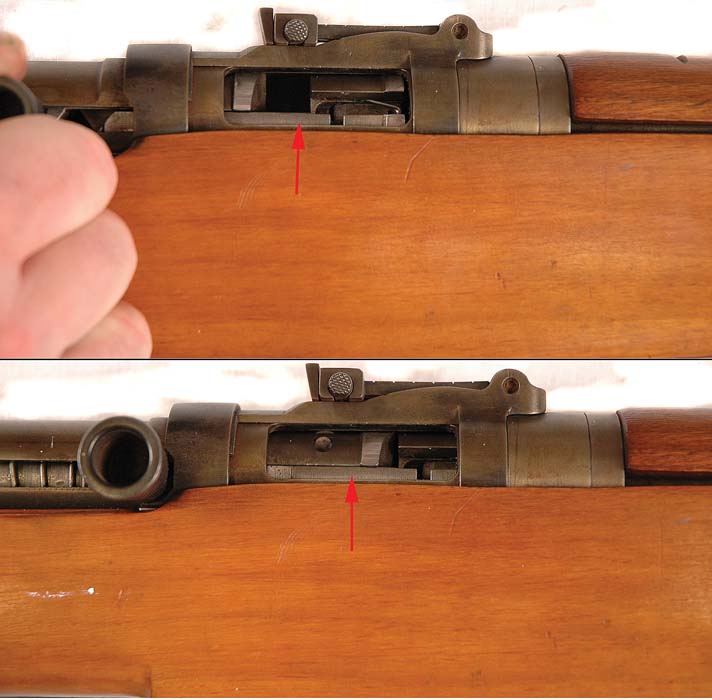

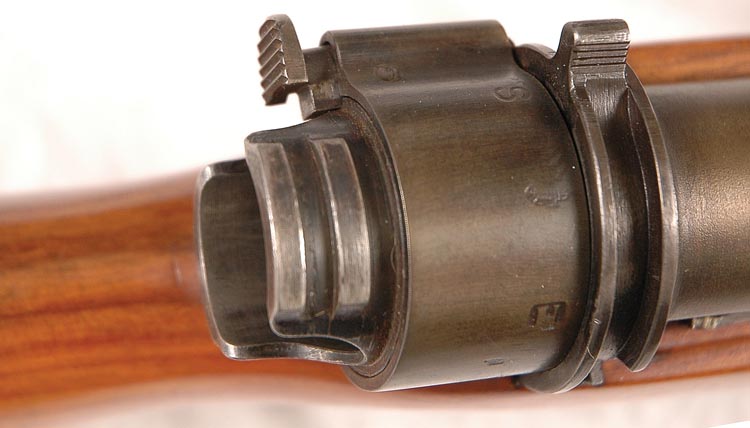
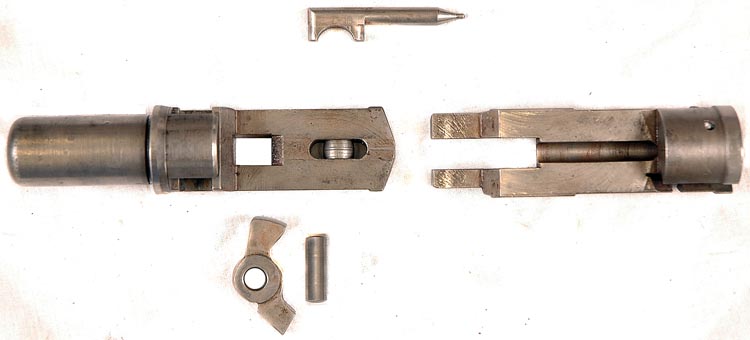
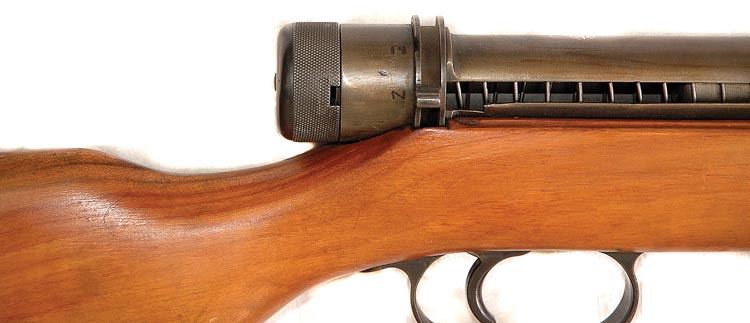


| This article first appeared in Small Arms Review V13N12 (September 2010) |





